Nasal decongestants for stuffy nose
by egpat 01 Aug 2019
It’s very difficult to breath with stuffy nose during cold and allergic rhinitis being highly uncomfortable to continue with daily tasks. Thanks to the class of drugs called nasal decongestants that bring a quick and prompt relief from nasal block.
What are these drugs?
These drugs mainly contain adrenergic agonists that act locally at nasal blood vessels to relieve nasal block. Phenylephrine is such a drug which is structurally related to epinephrine but lacks hydroxyl group at para position on benzene ring. Due to this structural modification, it selectively acts on α1-adrenergic receptors.
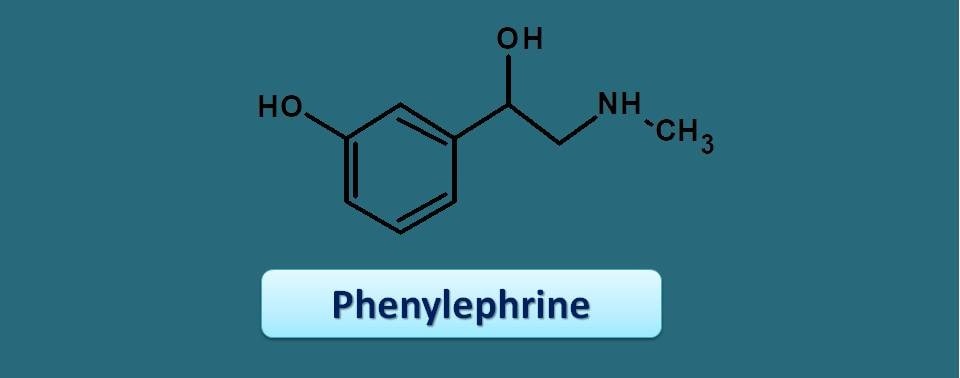
Another drug in this category is xylometazoline which is chemically belongs to imidazolines.
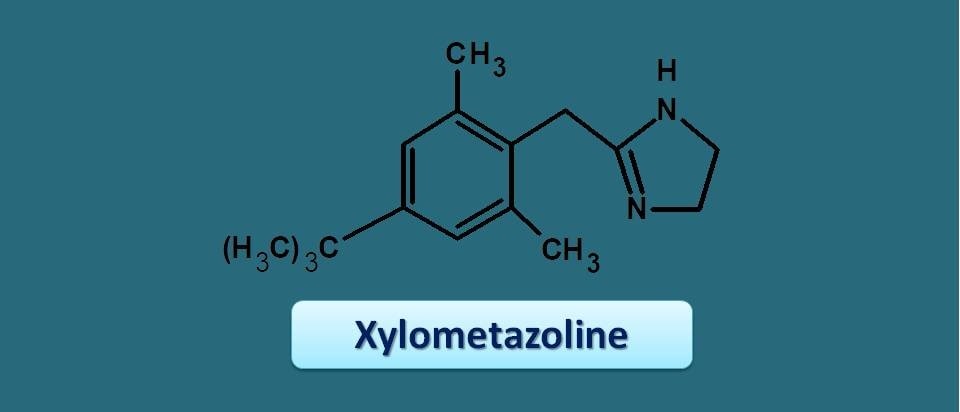
Another related medication is oxymetazoline with a hydroxyl group at the para position of the benzene ring.
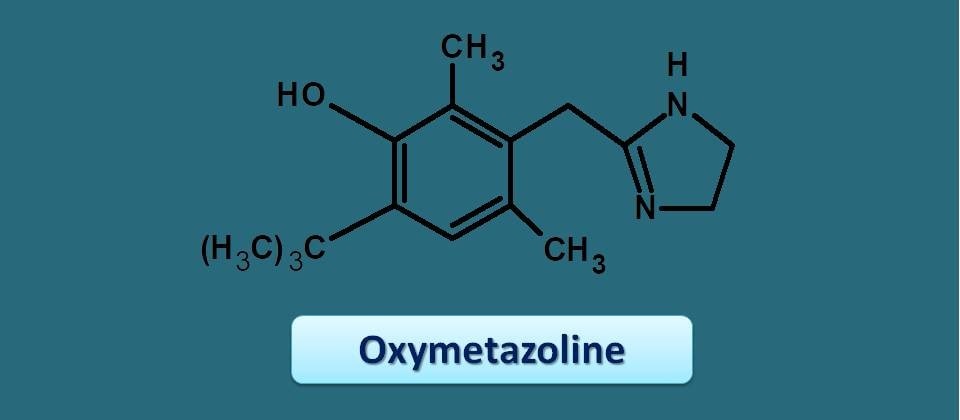
Naphazolline is another imidazoline derivative again acts as sympathomimetic that can be used for both nasal and ocular congestion. It is given as nasal drops and can also be included in few of cough syrups.
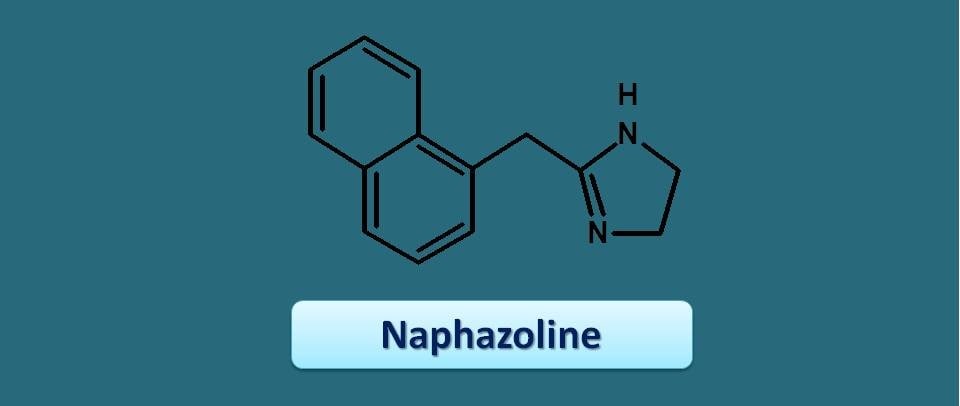
Ephedrine is a drug that stimulates sympathetic system thereby acts as bronchodilator and decongestant. But due to its adverse effects on CNS nowadays it is not used as a decongestant. At the same time pseudoephedrine, an isomer of ephedrine, prescribed as nasal decongestant.

Mechanism of nasal decongestants
All these nasal decongestants act on α1 receptors located on nasal blood vessels. When they occupy the receptor site, they activate phophatidyl inositol system thereby release two important secondary messengers such as inositol triphosphate and diacyl glycerol
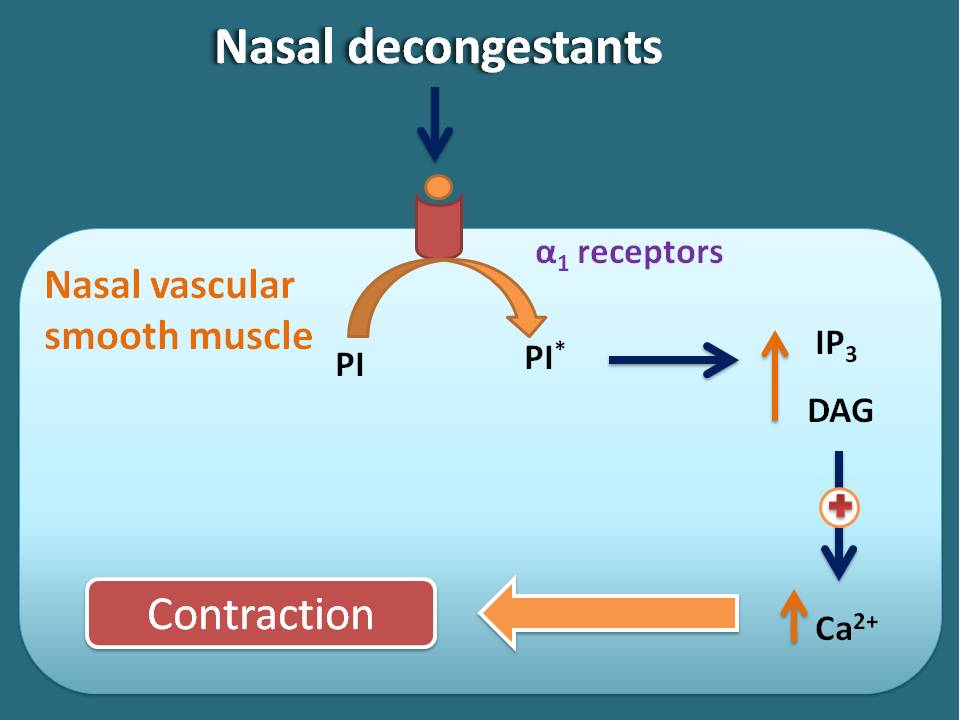
These two secondary messengers play a vital role in raising intracellular calcium levels within the vascular smooth muscle. Inositol triphosphate increases release of calcium from the intracellular stores in sarcoplasmic reticulum while diacyl glycerol increases calcium permeability into the membrane.

Due to these two actions, intracellular calcium levels rise resulting in vasoconstriction. Now as the blood vessels constrict, the nasal pathway is somewhat cleared resulting in relief from congestion.

Side effects
Since these drugs preferably given as nasal sprays, they produce local side effects like nasal irritation, sneezing, burning, and dryness. All these can be well tolerated generally as they exist for short period during the application. Apart from these other side effects are more bothersome and should be well monitored.
One of them is the rebound congestion.
Nasal decongestants can increase swelling, redness, pain and nasal stuffiness when they are used continuously for more than 3 days. This makes the situation more exacerbated than that untreated condition. That’s why these medications are not to be used for more than 3 days.

Another set of side effects that are highly significant include tremor, palpitations, anxiety and hypertension. Actually all these side effects are related to systemic effects of nasal decongestants. So when these drugs are properly administered only for local action at nostrils, the systemic effects can be minimized.
How they are used?
Right, we have seen different types of nasal decongestants but how they are given?
One of the routes of choice is by nasal spray. It produces quick relief by their local action and easy to administer. Even systemic side effects will be less with this route. Drugs like oxymetazoline, xylometazoline and pseudoephdrine can be given by this route.

Many of the times nasal congestion is associated with an allergic condition like allergic rhinitis. Therefore these drugs can also be combined with antihistamines and given as syrups. Phenylephrime and pseudoephdrine are given by this route

Note: Drugs like pseudoepehdrine can be given as both nasal spray and as a syrup.
Conclusion
Nasal decongestants produce a quick relief from stuffy nose by their selective vasoconstriction at nasal blood vessels thereby clear nasal pathway. This makes little effort for effective breathing in conditions like cold and rhinitis. Many of the nasal decongestants contain sympathomimetics but intended for location action at nostrils. Systemic effect of these drugs is a limiting side effect whereas rebound congestion limits their use for more than 3 days.